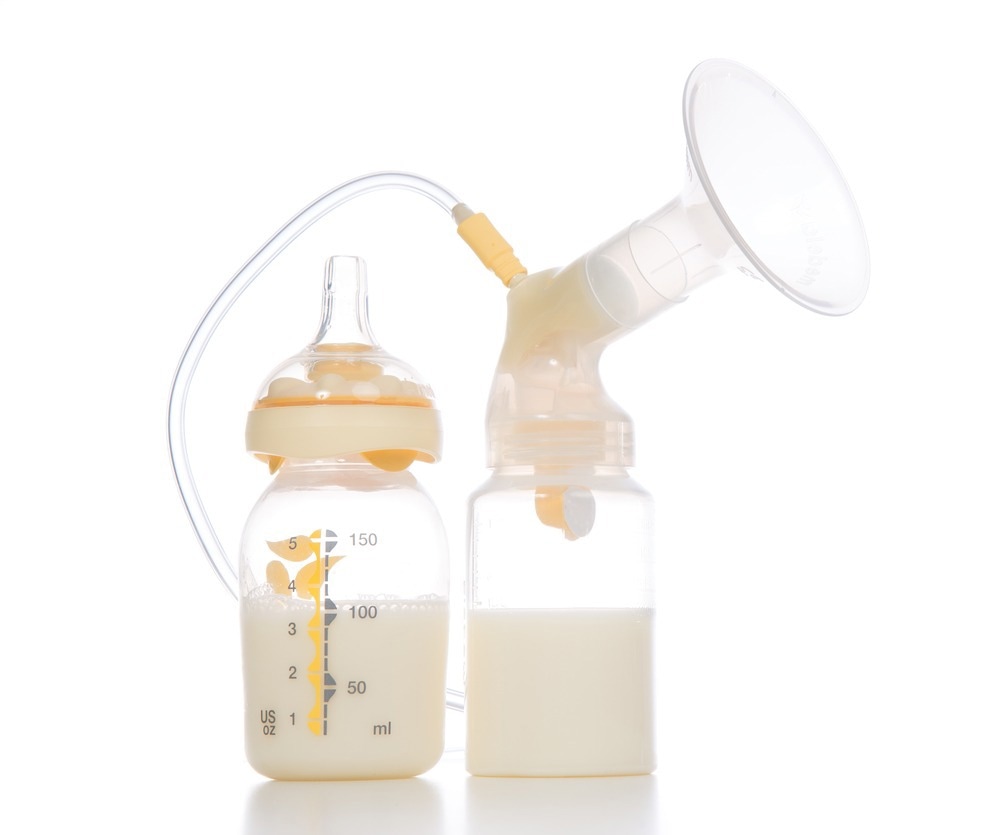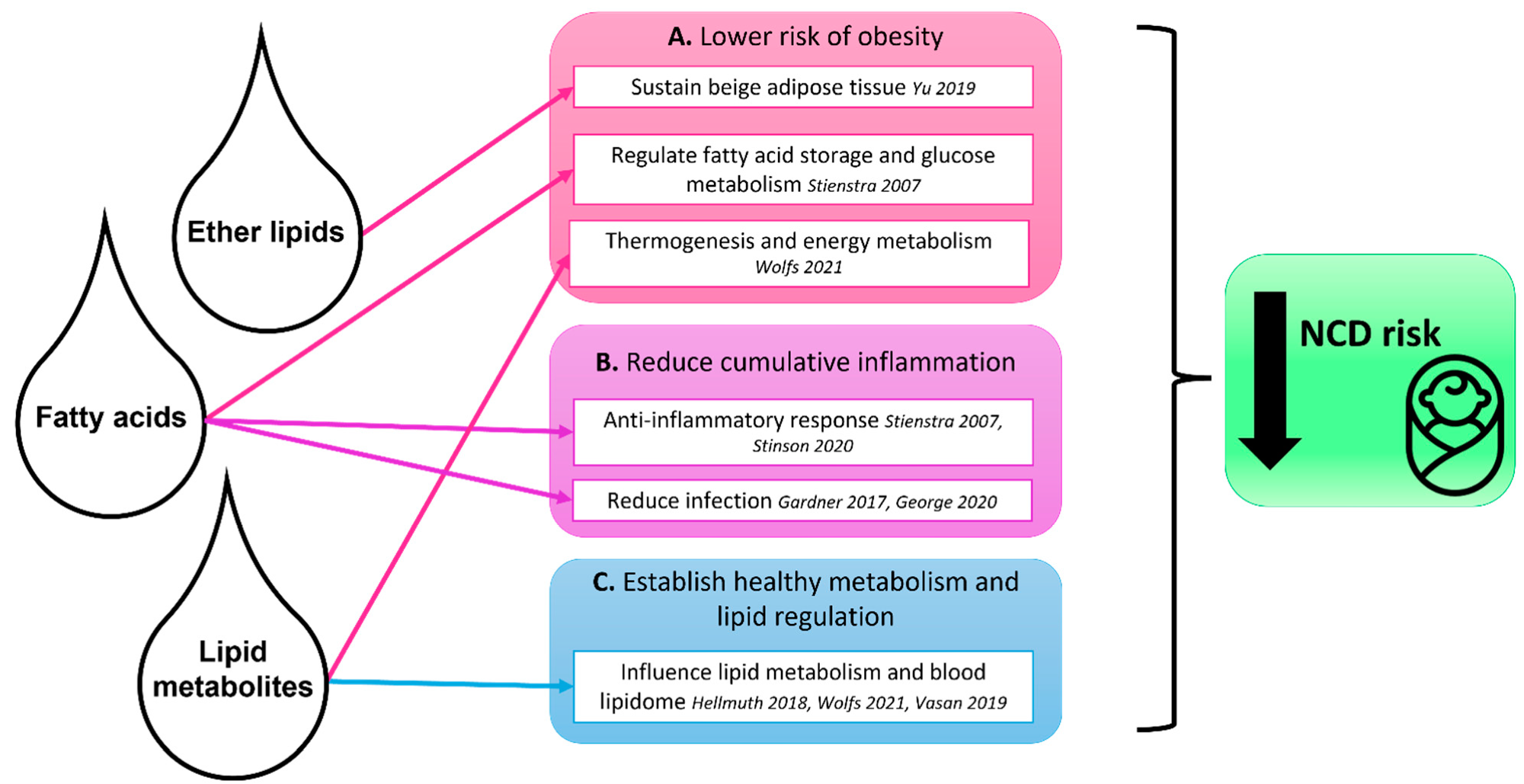Over the past several decades, it has become increasingly evident that many causes of non-communicable diseases (NCD), also known as lifestyle diseases, originate early in life. NCDs include obesity, diabetes, metabolic syndrome, hypertension, and cardiovascular disease. These diseases are responsible for a considerable proportion of deaths in developed countries.

Study: The Role of Human Milk Lipids and Lipid Metabolites in Protecting the Infant against Non-Communicable Disease. Image Credit: Dmitry Lobanov / Shutterstock.com
Breastfeeding and obesity
Childhood obesity is a risk factor for obesity and impaired metabolism later in life. Breastfed babies are known to have a lower incidence of obesity and diabetes, with lower fat mass as compared to other babies. In fact, a dose-response relationship has been reported, with babies who are breastfed for longer durations found to grow at a slower pace and put on weight at a slower rate as compared to formula-fed infants.
Chronic inflammation is a common factor underlying most NCDs. A rapid increase in body weight and the presence of infection, both of which are more likely in formula-fed infants as compared to those who are breastfed, predispose the child to inflammation, among other health conditions. For this reason, breastfeeding is considered one important strategy to reduce the prevalence of adult NCDs.
Breastmilk fat constitution may have a major role in this phenomenon, as it modulates the growth and health of the infant. Lipids are key to the synthesis of many metabolic and endocrine compounds. Furthermore, lipids have a significant role in immunity and inflammation and comprise most cell and other subcellular membranes.
The presence of several specialized classes of lipid in the infant could help stabilize the proportion of beige adipose tissue. This type of adipose tissue is metabolically active and used by the infant more readily than white fat, thereby preventing obesity.
One such lipid is anti-infective monoglycerides, which arise from the breakdown of triacylglycerides, and could prevent inflammation due to a build-up of infection-related changes. Other fatty acids are thought to optimize lipid metabolism in the infant.
The authors of the current paper attempt to explore these associations between breast milk lipids and infant outcomes.
 Summary of the possible roles of bioactive human milk lipids and lipid metabolites in protecting the infant against non-communicable disease risk. Lipids and lipid metabolites are delivered to the infant early in life through human milk and contribute to (A) lower risk of obesity, (B) reduction in cumulative inflammation, and (C) establishment of healthy metabolism and lipid regulation. Arrows indicate identified associations between human milk components and infant protection, as per the literature.
Summary of the possible roles of bioactive human milk lipids and lipid metabolites in protecting the infant against non-communicable disease risk. Lipids and lipid metabolites are delivered to the infant early in life through human milk and contribute to (A) lower risk of obesity, (B) reduction in cumulative inflammation, and (C) establishment of healthy metabolism and lipid regulation. Arrows indicate identified associations between human milk components and infant protection, as per the literature.
Study findings
Breastfed infants grow rapidly in the first few months of life, with slower growth thereafter until one year. These infants also have more beige adipose tissue, with lower fat deposition in the torso and a lower fat mass overall, all of which reduce their obesity risk.
Inflammation in early life may adversely affect future immunologic development and perturb the migration of tissue-resident immune cells into adipose tissue. Notably, breastfed infants have fewer infections and slower weight gain, both of which reduce the risk of inflammation.
The levels of high sensitivity C-reactive protein (hsCRP), which is a marker of inflammation, are also lower in breastfed infants by a third as compared to formula-fed infants at one year.
Lipid regulation was also different in breastfed infants as compared to formula-fed infants. While breastfed infants initially had higher cholesterol and ‘bad’ low-density lipoprotein (LDL) levels, as well as lower ‘good’ high-density lipoprotein (HDL) levels before six months of age, this trend reversed thereafter and, as adults, they had lower cholesterol levels.
Moreover, analysis of the infant lipidome demonstrated a different pattern of lipids, with higher long-chain polyunsaturated fatty acids (FAs), higher cholesterol esters, less phosphatidylcholine content, and lower levels of short-chain unsaturated FAs. In particular, one class of lipids called alklyldiacylglycerols can be up to 17 times higher in infants consuming breastmilk, thus indicating that “breastfed infants have likely developed a beneficial metabolic and hormonal response to feeding which persists in later life.”
Ether lipids
Human milk lipidomics is a new field that studies the hundreds of lipid types found in fat globules within human milk, which make up 5% of the solid weight and 50% of its energy content. These include alkylglycerols, which is a type of ether lipid that is rarely found in other foods and, as a result, largely absent in the adult diet.
In mouse experiments, these compounds sustain beige fat cell lifespans, thereby reducing fat cell size and enhancing the metabolism rate. This occurs through the upregulation of several thermogenesis pathway genes that promote fat breakdown.
Plasmalogens are another type of ether lipids that are higher in preterm infants consuming breastmilk who grow faster than those who show slower growth.
In adults, ether lipids can be used as supplements to improve health status.
Fatty acids
Human breastmilk also contains fatty acids (FAs), which are the simplest components of fats, such as anti-inflammatory omega three (n-3) FAs and pro-inflammatory omega six (n-3) FAs. A lower ratio of n-3 to n-6 is associated with greater lean mass at four to five years of age.
This association may be due to the upregulation of transcription factors like peroxisome proliferator-activate receptor gamma (PPAR-γ), which regulates a number of biological pathways involved in energy balance and the use of lipids and glucose.
The PPAR-γ receptor is primarily found in fat tissue, wherein it regulates the differentiation of fat cells. As a result, this receptor also modulates the storage and breakdown of fat, as well as glucose metabolism.
Obese women, as well as those who are overweight or diabetic, produce milk with a different FA profile as compared to those with normal weight. The infants of this subset of women are at greater risk of NCDs as adults.
Various types of FAs may affect the body’s immune capability. In fact, some FAs that are found in human milk at varying concentrations from 1% to 40% can neutralize a wide range of bacterial and lipid-enveloped viruses.
The breakdown of triglycerides in breastmilk within the infant gut also has antimicrobial functions, mostly through oleic acid and its monoglycerides.
Lipid products
FA metabolites also participate in infant metabolism. These are formed in breast milk through exercise and cold exposure on linoleic acid and other FAs.
The presence of the FA metabolite 12,13-dihydroxyoctadecanoic acid (12,13-diHOME), for example, is associated with less subcutaneous fat and a slower rate of weight gain in very young infants. In one study, this metabolite protected young mice against cardiovascular disease when fed excessive fat and may activate brown fat, while increasing insulin sensitivity.
Furthermore, 12,13-diHOME may also regulate immunity and allergic responses, as its levels within the gastrointestinal tract of infants are correlated with the incidence of eczema and other atopic diseases during this period. The levels of 12,13-diHOME have been observed to be high in adults with asthma and are further elevated when exposed to allergens or with acute respiratory distress syndrome (ARDS).
Many other important fat metabolites are found in breastmilk including lysophosphatidylcholine (LPC) 14:0 and myristic acid (C14:0), both of which are associated with excessive weight gain in childhood.
Conclusions
Breastmilk is an important source of nutritional, immunoregulatory, and emotional support for the infant and mother. Further widespread interdisciplinary research into its multifarious components will help identify those of therapeutic and preventive importance in the area of NCDs.
Journal reference:
- George, A. D., Burugupalli, S., Paul, S., et al. (2022). The Role of Human Milk Lipids and Lipid Metabolites in Protecting the Infant against Non-Communicable Disease. International Journal of Molecular Science. doi:10.3390/ijms23147490.